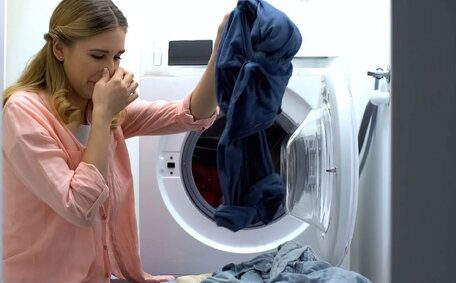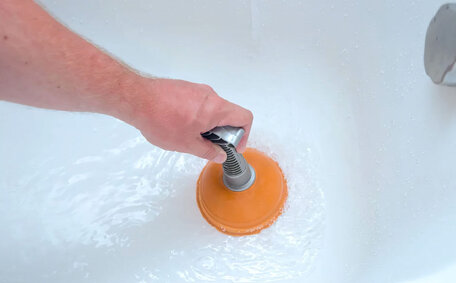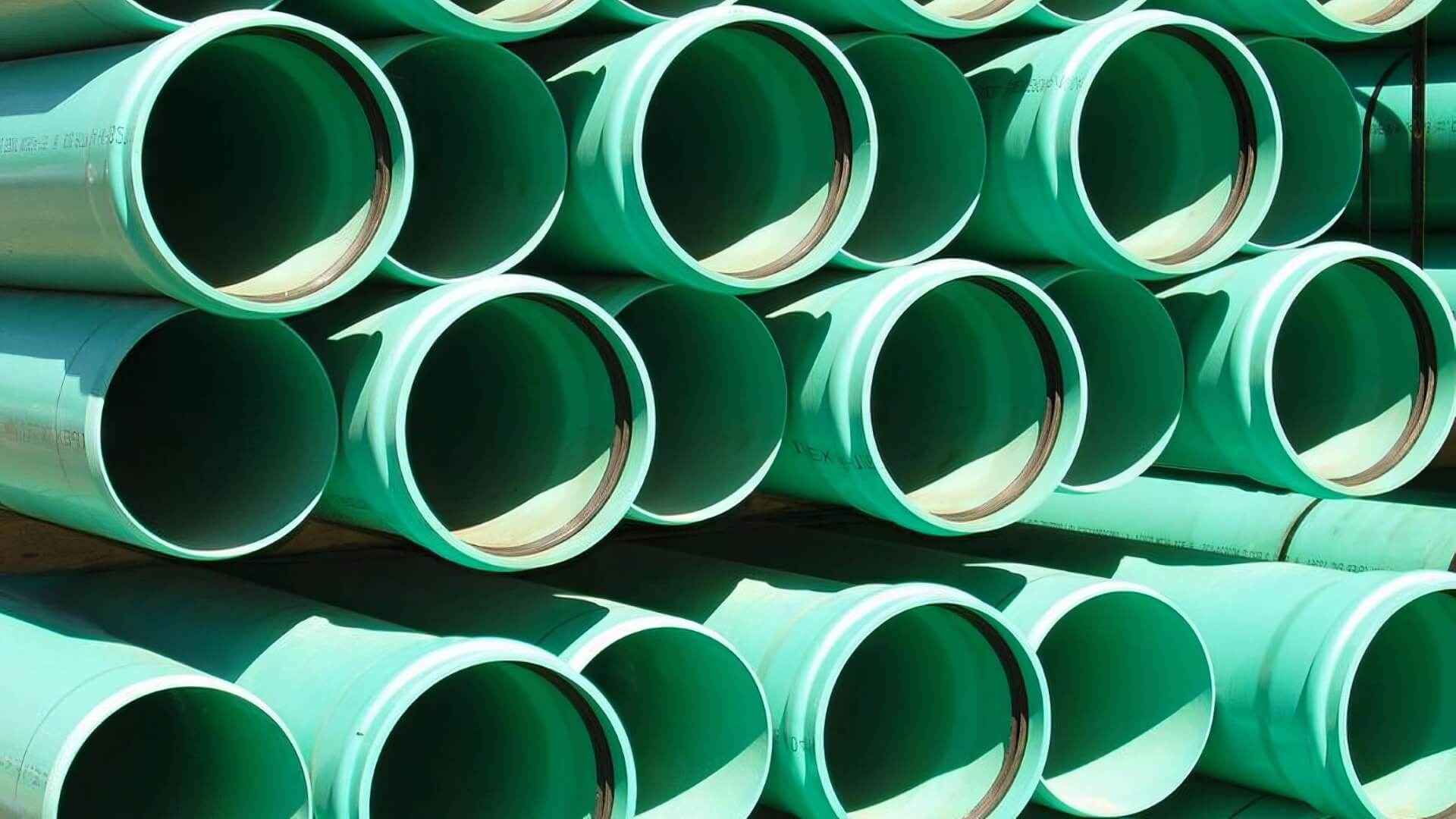Understanding Pipe Relining and Its Benefits
Pipe relining provides a trenchless, less disruptive alternative for restoring damaged pipes, bypassing the need for excavation.
This method inserts a liner imbued with resin into the problematic pipe and hardens it to create a sturdy new pipeline internally, bolstering structure and flow at a lower cost than total replacement.
The most common pipe relining technique is called cured-in-place pipe (CIPP). Copper pipes usually need a different epoxy relining method.
Relining offers numerous benefits over conventional pipe repair methods:
- Cost-efficient - Pipe relining is more economical than traditional excavation and replacement.
- Minimal disruption - The process is carried out with little to no digging, protecting your garden and driveway.
- Quick installation - Multiple pipes can be relined within a single day.
- Long life expectancy - CIPP linings are designed to last 50+ years
- Root protection - Effectively blocks roots from infiltrating pipes
Preparation involves a detailed assessment via a CCTV camera, followed by comprehensive cleaning with high-pressure water jets. After the curing process, a sleek, continuous new pipeline ideal for drain relining is created. Get in touch with us to learn more about our services for relining your impaired drains or pipes.
The adaptable CIPP liner is skilfully positioned within your drain by our technicians, utilising steam, air, or water to set it in place.
What Issues Indicate a Need for Relining
There are several common signs that your pipes may need relining:
- Frequent clogs or blocked drains - If you find yourself plunging drains often, soil pipes could be corroded or damaged inside, narrowing the diameter.
- Gurgling noises from pipes - This usually means buildup is accumulating in worn pipes.
- Leaking pipes - Cracked broken sections and holes will eventually form in ageing pipe systems.
- Noticeable dips or low spots in pipes - This can impede waste flow and lead to more clogs or water damage.
- Persistent bad drain odours - Gases escaping from cracks indicate broken pipes beneath your drains.
- High risk asbestos material pipes - Older homes often still have hazardous asbestos pipes that need replacing.
- General decrease of water flow - Narrowed pipes cannot handle regular household water volume.
Should you encounter any of these concerns, pipe relining might be the trenchless pipe repair solution you require. By utilising CCTV pipe inspections, our technicians assess the damage and ascertain whether your pipes are suitable for epoxy or CIPP relining, which is a more cost-effective alternative to complete line replacement.
Inspecting Pipes with CCTV Cameras
We utilise cutting-edge CCTV drain cameras to conduct thorough pipe inspections before relining. Our skilled technicians can thus pinpoint any issues such as cracks, breakages, blockages, or root invasions before proceeding with the application of the new lining.
The camera is navigated through the pipe using a cleanout or drain access point, providing clear video footage on a monitor for real-time analysis. This enables us to gauge the exact state and dimensions of your pipework, determining their eligibility for epoxy or CIPP relining.
CCTV inspections are crucial for pre-relining readiness. The ability to view inside the pipes is pivotal for effective problem resolution. This non-disruptive approach removes the necessity for intrusive digging, allowing relining to be done through existing access points.
Contact our Eastwood-based team which serves homeowners and businesses across Sydney’s northwest region. We’ve used CCTV pipe inspections to save customers substantial amounts, interested to see how much? Drop us a call. Check out our site or contact our team to discover more about this innovative solution for assessing your drainage system prior to reimagining it with relining.
Thoroughly Cleaning Pipes Before Relining
Thorough cleaning of pipes is an essential preparatory step for relining. Our technicians utilise powerful high-pressure water jets, surpassing 3000 PSI, to eliminate scale, grease, roots and other obstructions from pipes.
We insert the high-pressure rotary nozzle on our jetting hoses into either drain access points or pipes exposed during CCTV inspection. As the nozzle moves through the pipe, spinning at up to 2000 RPM, it scours the inner walls clean.
This step clears the way for subsequent epoxy or CIPP relining application. All loose particles, scale and contaminants must be eliminated or they could prevent the liner from properly adhering to the host pipe surface.
Our machinery is capable of maintaining not only residential kitchen and bathroom pipes but also extensive commercial drains of up to 300 millimetres. Sewer pipes, which tend to accumulate significant waste, necessitate rigorous cleaning.
Before proceeding with relining, we adhere to a comprehensive pipe cleaning process that includes:
- Insert hose into pipe access point
- Turn on truck-mounted jetting unit up to max PSI/RPM
- Feed hose through full pipe length, retracting in stages
- A repeat CCTV inspection confirms cleanliness
- Despatch any large debris chunks through the lines
- Flush pipe with clean water to remove remaining silt
Call our Eastwood team on 1300 349 338 for professional drain jetting. We service all suburbs in Sydney’s northwest with this critical pre-relining preparation.
Choosing the Right Relining Materials
Choosing the proper lining materials is key to ensuring the durability of the relining job. Key factors we consider when recommending a relining solution for clients in Eastwood and surrounding suburbs include:
- Pipe size and length
- Pipe location and depth
- Existing pipe material
- Degree of damage
- Expected lifespan
Smaller pipes under 300mm diameter are often good candidates for flexible cured-in-place (CIPP) linings made with epoxy resins saturated into a felt tube, similar to creating a sturdy denture base. These long-lasting materials form a seamless, jointless lining inside once inflated by steam and air pressure then cured.
For broader pipes, alternative techniques like sliplining with high-density polyethylene (HDPE) may be requisite. Meanwhile, heavily damaged pipes might warrant a more intensive approach, such as segmental panel relining that utilises small segments coated in epoxy.
Copper and galvanised steel pipes often require different epoxy spray coatings suitable to metal. This renews the smooth flow efficiency without undoing soldered joints.
Our Eastwood Plumbing crew conducts onsite pipe evaluations to suggest the most suitable trenchless relining materials for your particular needs. Our decade of experience serving Sydney’s households and businesses has equipped us with knowledge of the most effective solutions.
Allowing Access to Pipes Needing Relining
For effective pipe relining, our team requires unobstructed access to the drainage system’s entry points. Ensure that any external pipes in your garden are surrounded by clear space, free of debris, foliage, or other blockages around manholes and ground-level access points.
Internal pipes like kitchen sinks, laundry drains or bathroom pipes should have removable panels or tiles located if possible. But we can work around most fitted cupboards or vanities if needed.
On the agreed relining date, make sure pets are secured away from work areas. For commercial premises, please ensure staff steer clear of specific access zones during the precision relining job.
We need a brief working time of approximately 3-4 hours of unimpeded access per pipe section being relined. Our experienced technicians take all safety precautions and try to minimise disruption to your property’s regular activities.
Through good communication and preparation, we can internally rehabilitate your deteriorating pipes with seamless epoxy or CIPP liners. Contact our Eastwood team on 1300 349 338 if you have any other questions about allowing us access to facilitate pipe relining on your property.
What to Expect on Relining Day
Upon arrival, our Eastwood Plumbing team commences by preparing the equipment including CCTV cameras, jetting hoses, and liner impregnation devices, all while ensuring access areas are clear and safety protocols are thoroughly observed.
We execute a meticulous final clean of the pipes before relining, flushing out any residual debris with high-pressure jets, followed by a conclusive inspection using the cameras.
The CIPP felt lining tube is thoroughly impregnated with a specialised two-part epoxy resin, strategically inserted into the pipe’s inlet and expanded with compressed air to ensure it fills every crack and crevice.
As the resin-saturated liner touches the pipe walls, it begins curing. We maintain air pressure for several hours while it hardens. Heat lamps help accelerate and strengthen this reaction.
Following sensor confirmation of a full cure, any surplus material is excised. The reinforced seamless lining is anticipated to endure beyond 50 years with proper upkeep. The worksite is restored, with access points sealed, concluding a successful trenchless pipe repair operation by our team.
From setup to curing, most standard relining jobs take around half a day. We work as rapidly as possible to minimise impact on our clients’ homes and businesses. Let our Eastwood Plumbing team eliminate the need to excavate damaged pipes under buildings or landscaped areas.
Aftercare and Maintenance Post-Relining
Following pipe relining, the pipes demand minimal maintenance due to the robustness of the epoxy or CIPP materials employed. Still, it’s important to consider the following:
- Avoid pouring fats or harsh chemicals down drains that could damage the liners
- Periodically have Eastwood Plumbing inspect the relined pipes with CCTV cameras to check for any new issues
- If you notice any leaks, blockages or flow problems post-relining, your plumber is ready to be contacted immediately for assessment and repairs if needed
- Practise good drain care habits like catching food scraps, hair, and other debris before it enters pipes
With proper care, your relined pipes should last over 50 years. The epoxy and CIPP materials resist corrosion, roots, cracks, and accumulation issues. This trenchless solution not only saves money upfront compared to traditional pipe replacements but also in the long run due to minimal maintenance needs.
Our team from Eastwood Plumbing stands behind our pipe relining workmanship. We offer warranties against defects and will thoroughly inspect any issues that arise post-installation. Don’t hesitate to give us call on 1300 349 338 if you have any concerns.






